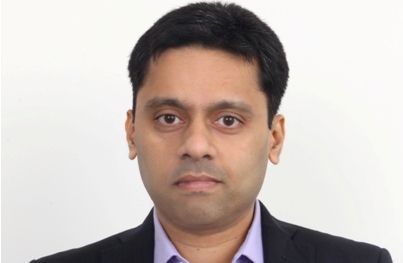Investors should have a reasonable allocation to fixed income debt funds depending on the risk profile
BFSI Industry Interview

Rajeev Radhakrishnan is the Head of Fixed Income & Fund Manager at SBI Mutual Fund. Rajeev is a CFA. In an interview with Advisorkhoj, he suggested that The choice of specific funds would depend on the investor’s risk tolerance, investment horizon and also liquidity requirements.
With reduction in small savings interest rates beginning this fiscal year, many investors, especially senior citizens, who rely on FD interest for their incomes are worried. What is your advice for investors who rely on fixed income investment for their income?
Small savings rates have been benchmarked to the corresponding government security yields with pre-defined mark ups and quarterly revision. Accordingly these instruments would have a floating rate character going forward with rates being aligned more closely with the extant interest rate scenario. Given the sovereign backing and tax benefits of small savings schemes, these instruments would continue to attract a fair bit of investor interest. Similarly investors in FD would face the re investment risks inherent in the product. Considering these factors allocation to debt funds should be considered more pro-actively.
While a certain proportion of fixed income investments may be warranted in small savings and FD’s, investors should have a reasonable allocation to fixed income debt funds depending on the risk profile. Given the increasing trend towards disintermediation, fixed income debt funds can provide attractive avenues for deployment of funds in a tax efficient manner while providing liquidity on an ongoing basis. Open ended actively managed funds can also better capture the gains arising from reduction in market interest rates.
CPI surged to 5.76% in May, mainly on account of food price inflation. What in your view are the factors underlying the (more or less) persistently high food price inflation in our country? Do you see food price inflation moderating in the coming months with, hopefully, good monsoon?
The persistence of food inflation can be largely attributed to the rigidities in the agricultural supply chain. A good monsoon can potentially alleviate any near term uptick in food prices. A durable softening in food price pressures would be dependent on supply side measures, better irrigation coverage and the success of initiatives such as crop insurance, APMC reforms and National Agri market etc., which seek to improve the overall terms of trade in the sector.
Crude prices have re-bounded from the January – February lows. Are there significant near term risks of crude prices affecting inflation and fiscal deficit in India?
Crude prices at current levels are not expected to impact the trajectory of inflation and fiscal numbers. Given the import intensity of crude, the direction of global crude prices is an important variable influencing the trajectory of both inflation and government fiscal numbers.
What is the implication of Brexit on the Indian economy, both in terms of exports and our currency, in near term and the medium term? Once the slightly longer term implications of Brexit plays out, do you expect it to cause a chain reaction of non USD currency devaluations?
In terms of trade linkages, the impact of Brexit is not material given the overall lower share of exports to GDP as well as the more diversified trade basket with exports to UK accounting for less than 10% of total exports. The impact on currency in the medium term would depend on the changes in global risk appetite as well as financial market developments. While a strong relative macro backdrop provides better cushion in terms of absorbing external event risks, the currency is unlikely to be immune to any broad based USD strength.
The longer term impact of Brexit would be felt in terms of potential similar developments in other jurisdictions within the EU and also the rise of protectionist trades practices and anti-immigration movements.
The US Federal Reserve did not raise interest rates in their last monetary policy announcement. With Brexit behind us, when do you expect the Fed to increase interest rates?
Financial market turbulence, soft patch in latest jobs data and subdued inflation have kept FOMC rate actions on hold post the December hike. Given that downside risks arising out of all the above have intensified post Brexit, the possibility of rate hikes (as evident from FED Funds Futures) in the current year have diminished currently.
Do you see the Reserve Bank making more rate cuts this fiscal year? If yes, what is the quantum of cuts that you expect this year?
Given the inflation targeting framework with a medium term CPI target of 4% +/- 2% , relatively stick inflation closer to the upper band and potential consumption demand arising out of pay commission awards, the incremental policy space available for RBI is rather limited. At the same time soft global yield environment, supportive liquidity framework and weak credit demand should support the outlook for rates.
Optics aside, do you expect the exit of the current RBI Governor to posing risks to the monetary policy challenges in India? What are the major monetary policy issues that the new RBI Governor will have to deal with?
The Monetary Policy Framework which calls for a flexible inflation targeting regime, with the RBI having instrument independence to achieve the mandated CPI range should enable monetary policy to be largely data dependent. In this context, it’s unlikely that a change in the Governor can potentially lead to resetting the path of monetary policy. Monetary policy challenge remains with respect to enabling a durable transition to a stable regime of non-inflationary growth.
What is your outlook on bond yields over the next 12 to 24 months?
Supportive environment of soft global bond yields and an enabling domestic environment of better liquidity as per the new liquidity framework should enable bond yields to stay supported. In the near term, potential additional OMO purchases by the RBI also supports the demand outlook for government securities.
Long term gilt fund investors, including investors in your gilt fund, SBI Magnum Gilt Fund – Long Term, have got around double digit returns in the last one year. Given your interest rate outlook, will you advise gilt fund investors to remain invested in these schemes over the next 2 to 3 years?
The institutional changes undertaken over the last few years have laid the ground for a more predictable, rule based policy making and has also been accompanied by improvement in macro variables. While the extent of potential additional rate cuts are subject to data, the current stance of an accommodative monetary policy is unlikely to reverse in the near term. At the same time, in the global context, there is significant room for additional FPI flows over the coming years, given both the yield spreads as well as improvements in macro data. Hence investors depending on their risk tolerance and liquidity requirements can consider remaining invested.
What kind of debt funds would you advise for investors looking for good returns, at this point of time?
The choice of specific funds would depend on the investor’s risk tolerance, investment horizon and also liquidity requirements.
Recent Interviews
-
In Conversation by Advisorkhoj with Mr Sorbh Gupta Head Equity Bajaj Finserv Mutual Fund
Oct 9, 2025
-
In Conversation by Advisorkhoj with Mr Sanjay Bembalkar Head Equity Union Mutual Fund
Oct 9, 2025
-
Partner Connect by Advisorkhoj with Mr Sandeep Garg & Mr Bhavesh Garg VSN Financial Services
Sep 25, 2025
-
Partner Connect by Advisorkhoj with Mr Prasad Shetty from MoneyAnna Mumbai
Sep 25, 2025
-
Partner Connect by Advisorkhoj with Ms Garima Nanduri PB Financial Services IMF Pvt Ltd New Delhi
Sep 25, 2025
Fund News
-
Groww Mutual Fund launches Groww Nifty Smallcap 250 ETF
Oct 13, 2025 by Advisorkhoj Team
-
Motilal Oswal Mutual Fund launches Motilal Oswal Consumption Fund
Oct 6, 2025 by Advisorkhoj Team
-
Kotak Mahindra Mutual Fund launches Kotak Gold Silver Passive FOF
Oct 6, 2025 by Advisorkhoj Team
-
Invesco Mutual Fund launches Invesco India Consumption Fund
Oct 6, 2025 by Advisorkhoj Team
-
ICICI Prudential Mutual Fund launches ICICI Prudential Conglomerate Fund
Oct 6, 2025 by Advisorkhoj Team





